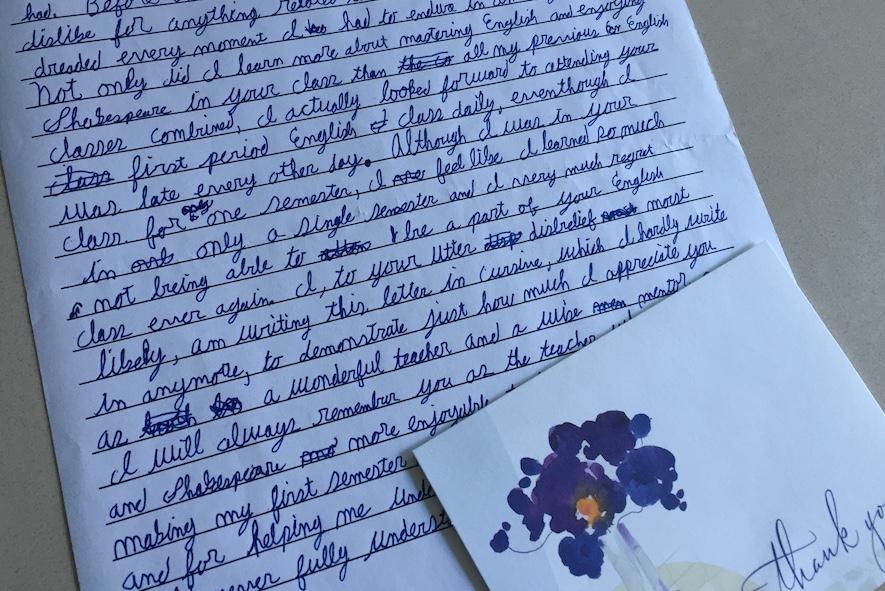Don’t write off handwriting
Each person’s handwriting tells their own story and adds a personal touch to their writing. Though typing notes and emails can save time, there is merit to valuing handwriting. Photo by Lily Friedman.
June 5, 2017
Marvel comics, flannel, the Beatles. Some things, old as they are, never go out of style. But one essential element of humanity that’s remained relevant for thousands of years seems to be slowly dying: handwriting.
In the age of computers, email and social media, we rarely need to pen our thoughts. Typing notes on phones or laptops is objectively easier and faster. We’ve seen this in school, too; Google Docs, Chromebooks and computerized tests are continually replacing traditional methods.
Yet as neat and efficient as typing might be, the departure from handwriting leaves behind something distinctly beautiful and human. The personalized loops and curls of each person’s handwriting are as much a reflection of their identity and personality as their voice or their fashion. Every person’s handwriting is unique and irreplaceable.
Furthermore, taking the time to write something out on paper immediately instills some personal meaning into any written work. When my friend from middle school moved to Massachusetts, we agreed to keep in touch with handwritten letters rather than email. Although her messages weren’t reaching me instantly, every time I received a letter from her I felt that I was getting a real piece of her. Handwritten letters can reflect time, effort and a personal touch that typed letters simply can’t replace.
Handwriting isn’t just an artistic tool; it’s also essential for learning. Sure, we all get annoyed when we have to frantically copy down a teacher’s extensive notes. But in my experience, when I handwrite notes, I rarely have to look back at them because the physical act of writing them down ingrains them in my brain. And since writing notes by hand is slower, it requires me to constantly process the information as I listen, helping me to memorize notes as the teacher goes through them.
Typed notes simply can’t compare when the end goal is memorization. The rapid speed of typing allows students to mindlessly transcribe notes verbatim, which means less processing and less learning. Students who take notes with laptops have a lower conceptual understanding of the topic and have more trouble applying concepts, according to a Princeton University study.
Of course, typing does have benefits. For example, I needed to type this blog to make it accessible for people to view. But there are infinite situations where a shift back to handwriting can improve our lives: for taking notes in class, communicating long-distance, or writing a birthday card for a friend, handwriting will always remain the best method.
Don’t let the expansion of technology fool you: handwriting is a fundamental human action, and no number of fonts on a computer can adequately replace this vital skill.








